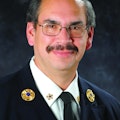Several months ago, the National Fallen Firefighters Foundation (NFFF) spoke to all the fire service magazines. A conference call was made to see whether there could be a combined, unified effort of the four top magazines to send a message to the nation's firefighters. The message about the "16 Firefighter Life Safety Initiatives" is not getting through. Firefighters are still dying at an unacceptable pace. The intent is to have the fire service magazines utilize writers of their choosing to discuss areas of growing concern.
As our part of this safety-awareness program, we present three articles with different views for this combined campaign. Assisting us in this effort are articles by Chiefs Dennis Rubin, J. Gordon Routley and Gary Morris. Changing attitudes, accountability and stopping unsafe practices are the three topics we chose to publish. You can find the articles beginning on page 78. Read these articles, share your thoughts and practice like your life depends on it, because it does. Last month, we took note of the alarming number of fire apparatus accidents involving other fire apparatus. Arrive alive! That is part of the same message. For more information, visit www.firehero.org/index1.aspx?BD=26803.
A recent debate over "too much" safety reared its head. It is great to be a young firefighter full of energy and ready to run into every situation at breakneck speed. Veterans usually take a calm view of a situation, size it up, and then make their decisions on what to do, where to operate, and whether it is safe enough and proceed. A company officer is in charge of a company. He or she is responsible for the actions and safety of the members under his or her leadership. A chief officer must be aware of the entire responding assignment and run the operation accordingly.
It is relatively easy to be the nozzle team operating the line on the seat of the fire. The engine officer directs the operation and makes sure that the line is positioned correctly, that there is enough hose and that the firefighters are operating as a team. The truck officer coordinates the inside and outside teams, the ladders being raised, roofs being opened, searches being conducted and activities on the floor above. The chief is running the entire operation, calling for additional resources, relocating units to cover empty stations, rotating and rehabbing firefighters, making notifications, receiving reports, and asking for progress reports and accountability information. The incident commander also has to coordinate with police, EMS, utilities and other agencies. The higher in command you go, the more responsibility you have. It is not easy, but overall safety of the troops is Job 1. It is something that has to be taken care of at each incident. Do you do your fair share?
My first working fire as a chief was in a senior citizen garden apartment complex. Fire was in one unit on the first floor and people were trapped above. I was talking to and receiving information from units, talking with the dispatcher requesting additional units, talking with civilians and police on scene, and listening to reports. I felt like a hockey goalie lined up in front of the net in practice taking shots from all the players; in this case, the people in front of me and fire companies operating on the fireground. Many people have a lot to say about how incidents are run. Everybody should take a turn once to see what being the chief is all about. One time, and then there will be a lot of silence.
We are proud to present the latest edition of the National Run Survey comparing numbers and statistics from the busiest units and departments from career fire departments across the country. In part one of our multi-part installment, we present fire department profiles, including population, budget, number of engines, ladders, ambulances, medics, chiefs and total strength of each department.
In our Advanced Rescue Technology supplement, we focus on a rescue involving a trapped worker buried up to his neck in cement. With the coordination of the Seattle Fire Department Technical Rescue Team and first-alarm units, the person was rescued successfully. Training was the key factor in the operation. The responders' hard work and determination resulted in a successful outcome.
For comments, ideas and suggestions, please contact us at [email protected].
number for LODDs logo: 38
number for residential box: 720
About the Author

Harvey Eisner
Editor Emeritus
HARVEY EISNER was named Editor Emeritus of Firehouse® after serving 15 years as Firehouse's Editor-in-Chief. He joined the Tenafly, NJ, Fire Department in 1975 and served as chief of department for 12 years. He was a firefighter in the Stillwater, OK, Fire Department for three years while attending Oklahoma State University. Eisner was an honorary assistant chief of the FDNY and program director for the Firehouse Expo, Firehouse World and Firehouse Central conferences. He covered many major fires and disasters and interviewed numerous fire service leaders for Firehouse®